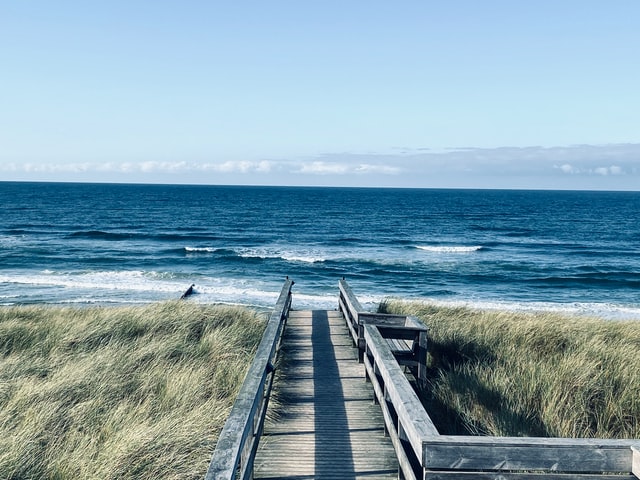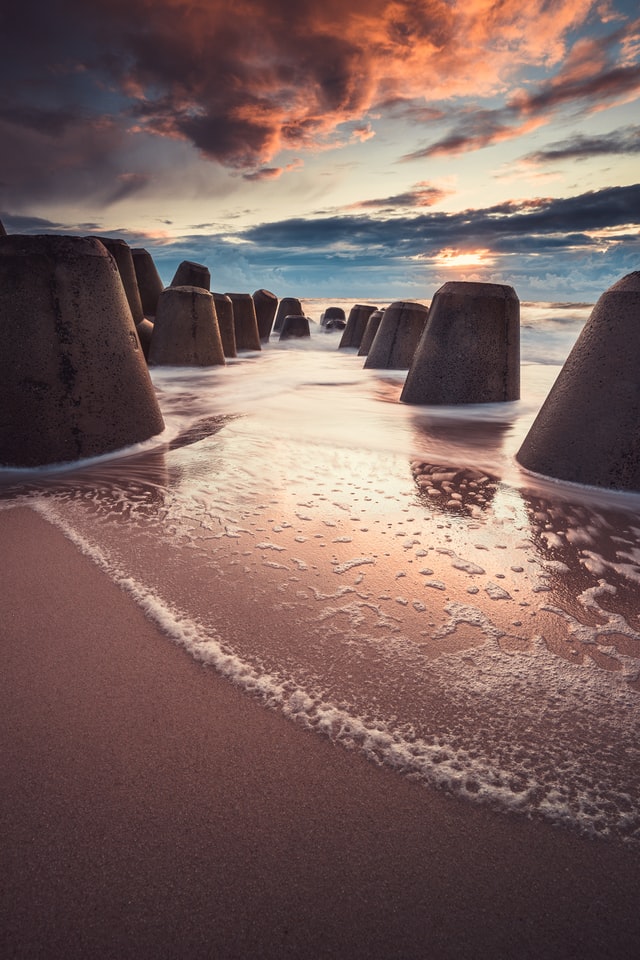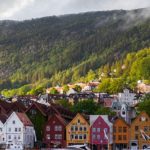Standing Out on the German Island of Sylt

My idea of a perfect morning is waking up late in a cozy bed that has one too many blankets, light freely filtering through partially open windows and, maybe, someone I love will bring me breakfast in bed. Instead, a cacophony of geese woke me up at the crack of dawn. I peeled the humid blankets off and hit my head on the car roof. Like the day before, and the day before that. Outside the window, a fine mist suspended over the tall grass and I shivered into an extra pair of pants and large jacket.
Although it was the beginning of May, northern Germany was barely above freezing. My travel companion was a morning person and had finished brushing his teeth and packing for the day before I had even rubbed the sleep out of my eyes. His antsy hopping around annoyed me enough to hurry and clean up enough to be socially presentable. In no time, we were on the train from Westerland to the island of Sylt.
Sylt – an island shaped like a ballerina – straddles the maritime border between Denmark and Germany. Although freezing most of the year, it is bordered by 25 miles of white sandy beaches. The population swells during the day, as mostly German tourists from the mainland arrive by car, train, and boat.
I have a similar story to many children of immigrants: finding the balance between the culture I was born with and the one that surrounded me.
Why do people come to Sylt? For a remote escape from reality.
Like many of my adventures, this trip to Sylt was a little impromptu. I arrived in Wolfsburg, near Berlin, with five days to spend in Germany. My travel companion wanted to get out of town as far, as cheaply, and as soon as possible. A local German, he had heard of Sylt and decided it would be worthwhile if we lived in the car for a couple nights. I was game.

After sneaking the mattress down from his landlady’s home into the SUV, we hit the road and landed right outside Hamburg. In Germany, it’s legal to sleep in your car if it’s parked out of the way. Looking for a car camping spot was a learning process. We drove around a farm community, still able to see the city lights’ glow in the distance, making sure to remain on public roads that were well lit but not too busy. The road we picked that night was a poor choice, or maybe it was how we had parked, because five or six people knocked on our windows asking if “Ist alles in Ordnung?” – is everything OK?
Being woken up by loud knocks and people shouting in German was the opposite of comforting.
The second day, we finally made it to Sylt. The train pulled into the central square and we had to make the decision to either explore the north or south tip of the island. Instead of choosing, we spent the morning in one of those iconic beach chairs and sipped coffee, watching the waves crash along the concrete tetrapods. Around noon, the wind had died down and wasn’t slapping our faces, so we ventured along the coast.
Pairs of eyes watched me no matter what I did. When I ordered coffee, it was like a spotlight shone directly on me, the entire café quieted down and watched my performance.
Sylt is unknown to many Germans, and very few foreign tourists visit the island. I noticed this right away. As an Indian girl from the US who didn’t speak German, I was easy to spot and didn’t blend in in any way. Pairs of eyes watched me no matter what I did. When I ordered coffee, it was like a spotlight shone directly on me, the entire café quieted down and watched my performance. Old German women turned around to watch my black hair flying in the sea breeze as I sauntered down the boardwalk.
Being labelled ‘different’ is something everyone goes through in life at some point. Growing up in the US, I have a similar story to many children of immigrants: finding the balance between the culture I was born with and the one that surrounded me. My way of dealing with this was trying to fit in as best I could. This meant that at home I was very Indian, and at school I was anything but. Growing older, and reconciling my two cultures, I’ve come to embrace the characteristics that set me apart. One of the many reasons I travel is to understand how my view of the world is different, and how I can better connect with others. Climbing out of my comfort zone is half the fun.
Standing Out on the German Island of Sylt.
I didn’t feel hostility towards me on Sylt, but I was out of place, acutely aware of it, and made no attempt to shy away from it.
Most of my two full days on the island were spent hopping from one restaurant to another in search of the best soup. We took the bus and saw the entire island for only five euros. We walked along miles of empty coastlines, the sea persistently eroding and shaping the island into something new. In the hours between, I slept on the beach in a chair and hoped I wouldn’t be woken by someone shouting in German. As the sun set on chilly Sylt, we rode the train back to Westerland and tucked in for a final night beneath the stars.
Photo credits for Standing Out on the German Island of Sylt by Unsplash.








